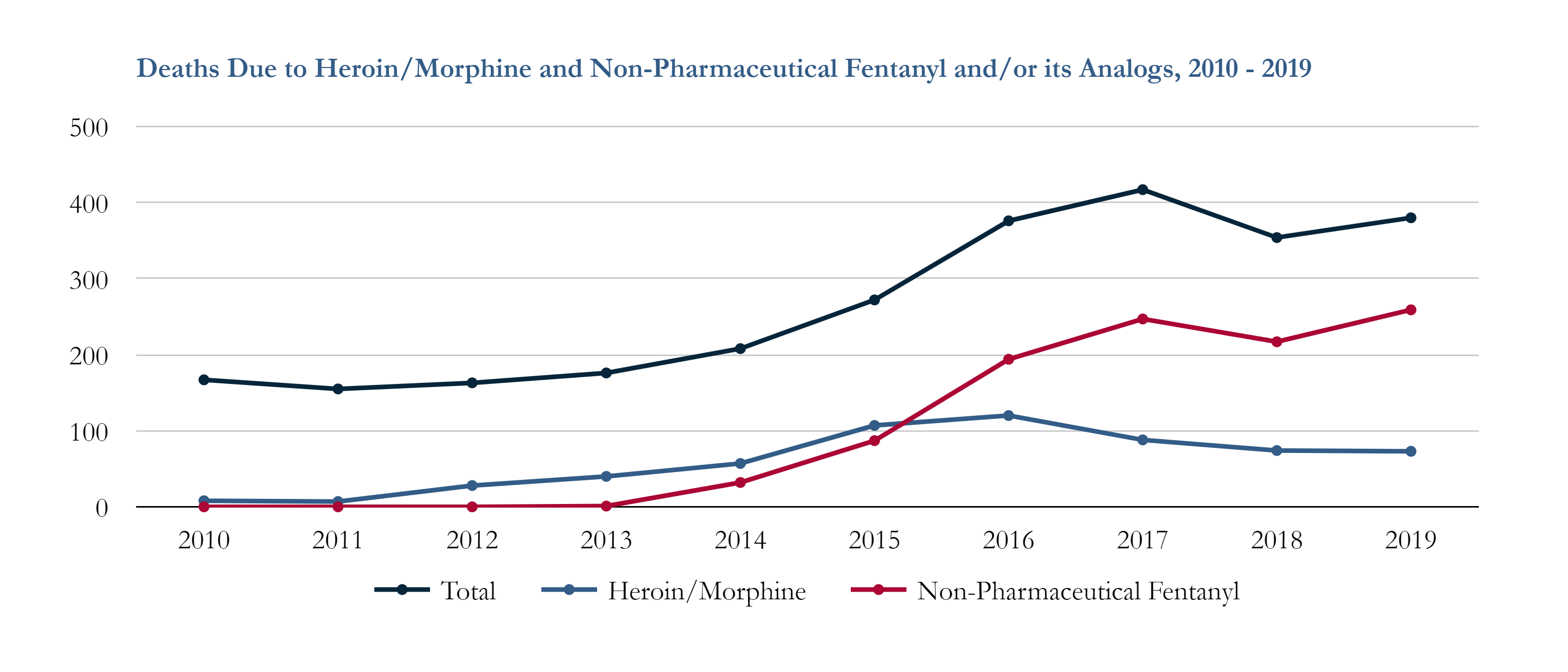The Opioid Epidemic
Understanding the Roots of the Epidemic
Maine has been hit hard by the opioid epidemic. Between 2000 and 2020, 4518 individuals died from a drug-related overdose. In recent years, Maine loses approximately one person every day to drug overdose. Yet, for every fatal drug overdose, data suggests that there are between 10 and 15 non-fatal overdoses where Mainers are saved thanks to the life-saving overdose reversal drug Naloxone. These are our neighbors, our colleagues, our friends, and our family members. Overdoses are preventable and Opioid Use Disorder is treatable. We owe it to every Mainer affected by the opioid epidemic, to their families, and to their friends to do more to break this deadly cycle.
The first wave of overdoses began in the 1990s after increases in opioid prescriptions initially hooked unsuspecting patients. National studies have shown that more than 75% of heroin users utilized prescription painkillers as their gateway. The Mills administration has joined other states to sue OxyContin maker Purdue Pharma in an effort to get justice for their aggressive role in illegally pushing OxyContin prescribing that kicked off the first wave of the epidemic.
The second wave of the epidemic began in the 2000s as patients formerly on prescribed opioids switched to heroin because of curbed prescribing practices and a new flood of heroin in the illegal drug supply. A good explanation of this phenomenon is described by Sam Quinones in Dreamland. Sam was the keynote speaker at Governor Mills’ first Opioid Response Summit.
The third wave began in 2014 as synthetic opioids, such as fentanyl, entered the drug supply. Fentanyl is 50 to 100 times more potent than morphine. It is a prescription drug used primarily in managing patients with severe pain such as after surgery or late-stage cancer. But the fentanyl bought on the street is typically manufactured illegally and cut into other drugs such as meth and cocaine without the users’ knowledge.
 (source: MaineDrugData.com)For more information on the roots of the opioid epidemic, visit https://www.cdc.gov/drugoverdose/epidemic/index.html.
(source: MaineDrugData.com)For more information on the roots of the opioid epidemic, visit https://www.cdc.gov/drugoverdose/epidemic/index.html.
What are Opioids?
Opioids are natural, synthetic, or semi-synthetic chemicals that interact with opioid receptors on nerve cells in the body and brain, and reduce the intensity of pain signals and feelings of pain. This class of drugs includes the illegal drug heroin, synthetic opioids such as fentanyl, and pain medications available legally by prescription, such as oxycontin, oxycodone, hydrocodone, codeine, morphine, and many others. Prescription opioids are generally safe when taken for a short time and as directed by a doctor, but also pose a high risk for misuse and addiction.
What is Opioid Use Disorder (OUD) and Substance Use Disorder (SUD)?
OUD is a specific form of substance use disorder that occurs when attempts to cut down or control opioid use are unsuccessful or when use results in social problems and a failure to fulfill obligations at work, school, or home. OUD is a treatable chronic disease. Opioid Use Disorder (previously referred to as opioid addiction) often comes after the person has developed opioid tolerance and dependence, making it physically challenging to stop opioid use and increasing the risk of withdrawal.
Substance Use Disorder (SUD) and mental health affect people from all walks of life and all age groups. These illnesses are common, recurrent, and can be serious, but they are treatable and people do recover. Substance use disorders occur when the recurrent use of alcohol and/or drugs causes clinically significant impairment, including health problems, disability, and failure to meet major responsibilities at work, school, or home. Mental disorders involve changes in thinking, mood, and/or behavior. These disorders can affect how we relate to others and make choices. Reaching a level that can be formally diagnosed often depends on a reduction in a person’s ability to function as a result of the disorder.
OUD is Treatable:
Research clearly shows that medication-assisted treatment (MAT) used for an indefinite period of time is one of the most effective ways of treating OUD. Suboxone (buprenorphine) and Methadone are the most common and effective modes of reducing opioid use and promoting long-term health. Learn about the different treatment options found in Maine. There are many paths to recovery and many people willing to help on that journey. Visit our Resources page to find local support and treatment options near you.